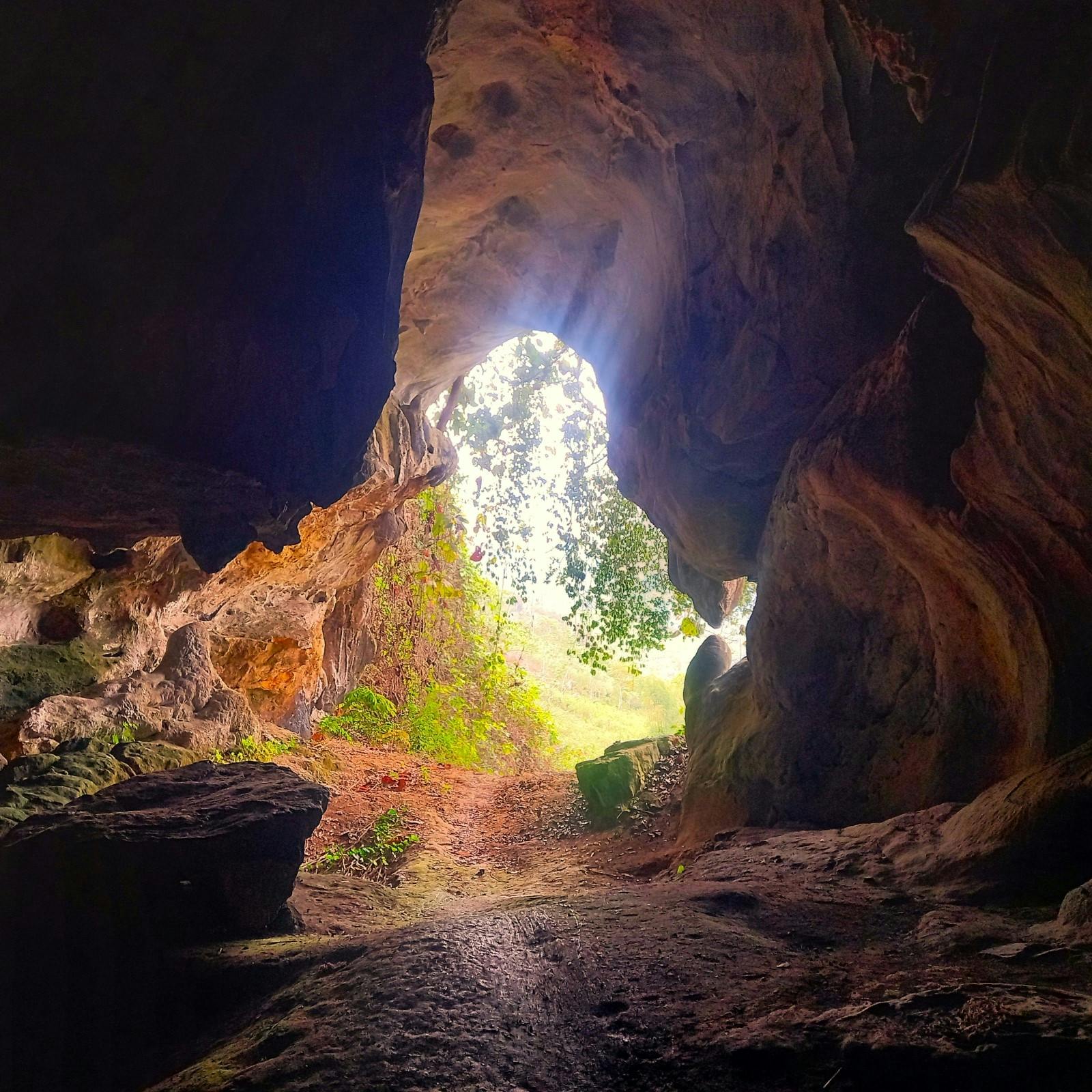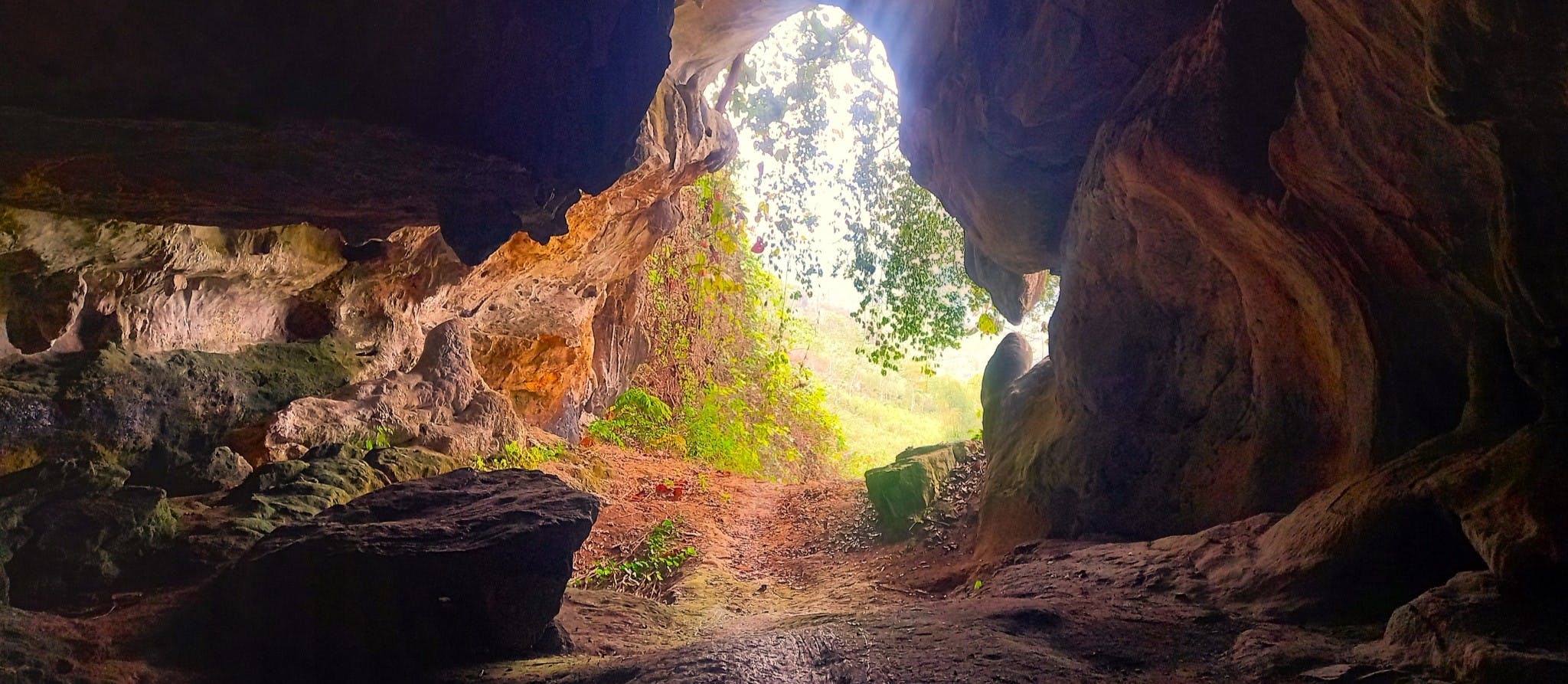First published July 2023 | Words and photos by Vietnam Coracle

Tom Divers is the founder and creator of Vietnam Coracle. He’s lived, travelled and worked in Vietnam since 2005. Born in London, he travelled from an early age, visiting over 40 countries (he first visited Vietnam in 1999). Now, whenever he has the opportunity to make a trip, he rarely looks beyond Vietnam’s borders and his trusty motorbike, Stavros. Read more about Tom on the About Page, Vietnam Times and ASE Podcast.
Two limestone caverns beneath the Phà Én Mountains, Hang Bua and Thẩm Ồm are impressive natural sights located off the beaten path in northwest Nghệ An Province. The geological time scale of these caves is vast, dating back millions of years, but the caves’ association with human history is also very ancient indeed. This is the site of the earliest known evidence of human life in Vietnam: 200,000 years ago1. Human teeth, tools and animal fossils have been discovered in the caves, suggesting continuous human activity in this region since the Middle Pleistocene period. Entrance to both caves is free and they are easily accessible by road. You can visit independently, without going on a tour, and there’s rarely anyone else here. What’s more, the surrounding countryside is very pretty and there are atmospheric homestays nearby.
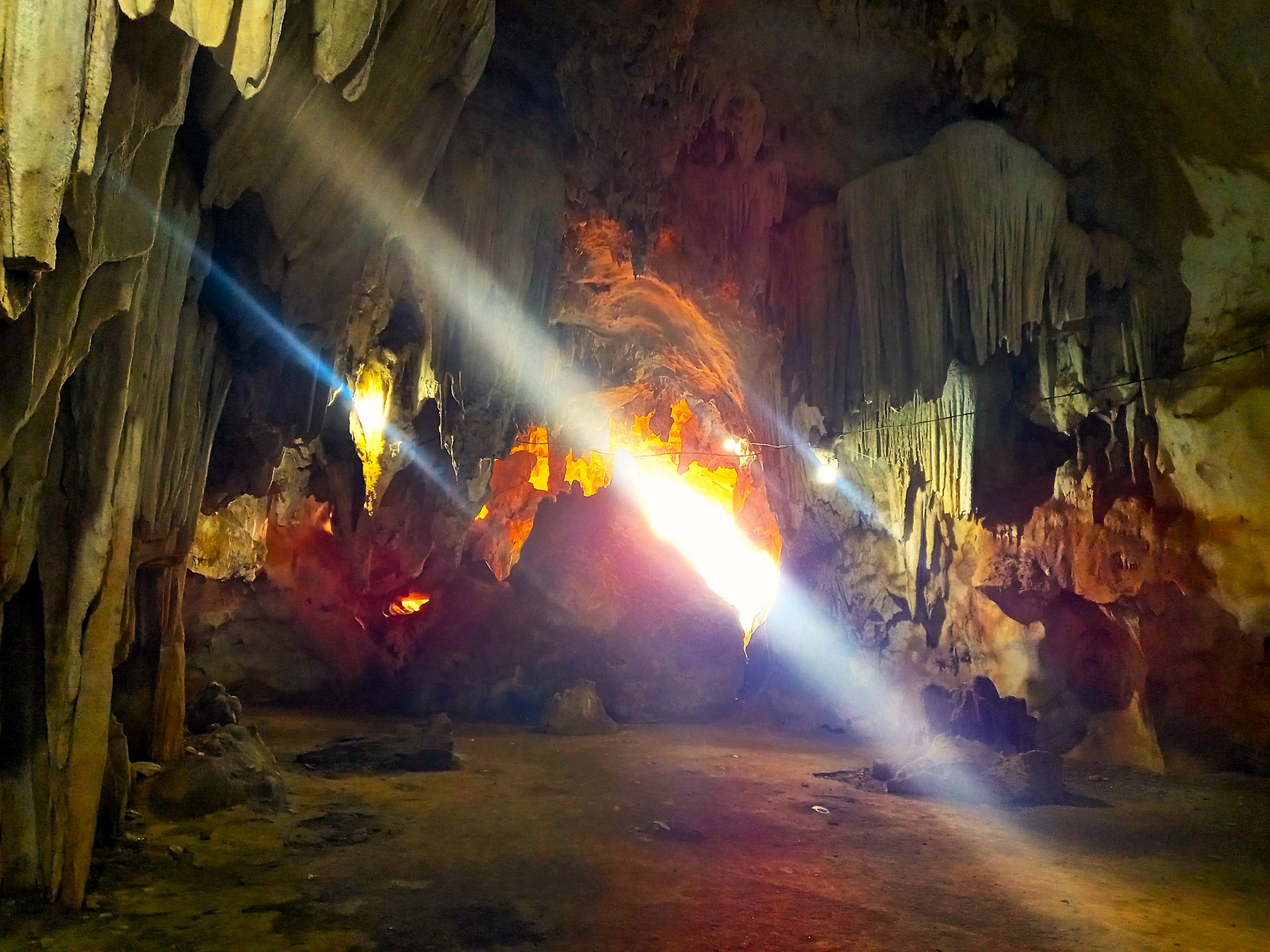
Please Support Vietnam Coracle
Make a donation or become a patron if you enjoy this website. Vietnam Coracle is totally free & independent. I never receive payment for anything I write.
Thank you, Tom
[Back Top]
HANG BUA & THAM OM CAVES
Limestone Caverns & Site of the Earliest Humans in Vietnam
Located in the north-central province of Nghệ An, Hang Bua and Thẩm Ồm caves are open daily from dawn till dusk. There’s no entrance fee at the time of writing, but plans were afoot to renovate Thẩm Ồm Cave and open more of it to visitors. Any time of year is good, but the weather and surrounding countryside is best between April-July. The caves are easy to access with your own wheels and visiting both only takes around an hour in total. The caves are 15km due west of Qùy Châu (also called Tân Lạc), the nearest town. Nearby Hoa Tiến village has several good homestays and is only 5 minutes from the caves. Hang Bua and Thẩm Ồm are definitely worth a stop if you’re travelling on the Mường Lống Loop or as a detour from the Ho Chi Minh Road, Vinh City or the north-central coast. See below for details about the caves, where to stay, food and drink, and how to get there:

CONTENTS:
*Please Note: Historical information in this article is based only on my limited reading & understanding of various sources & conversations with people: I am not an historian & I cannot vouch for the accuracy of historical details in this article.
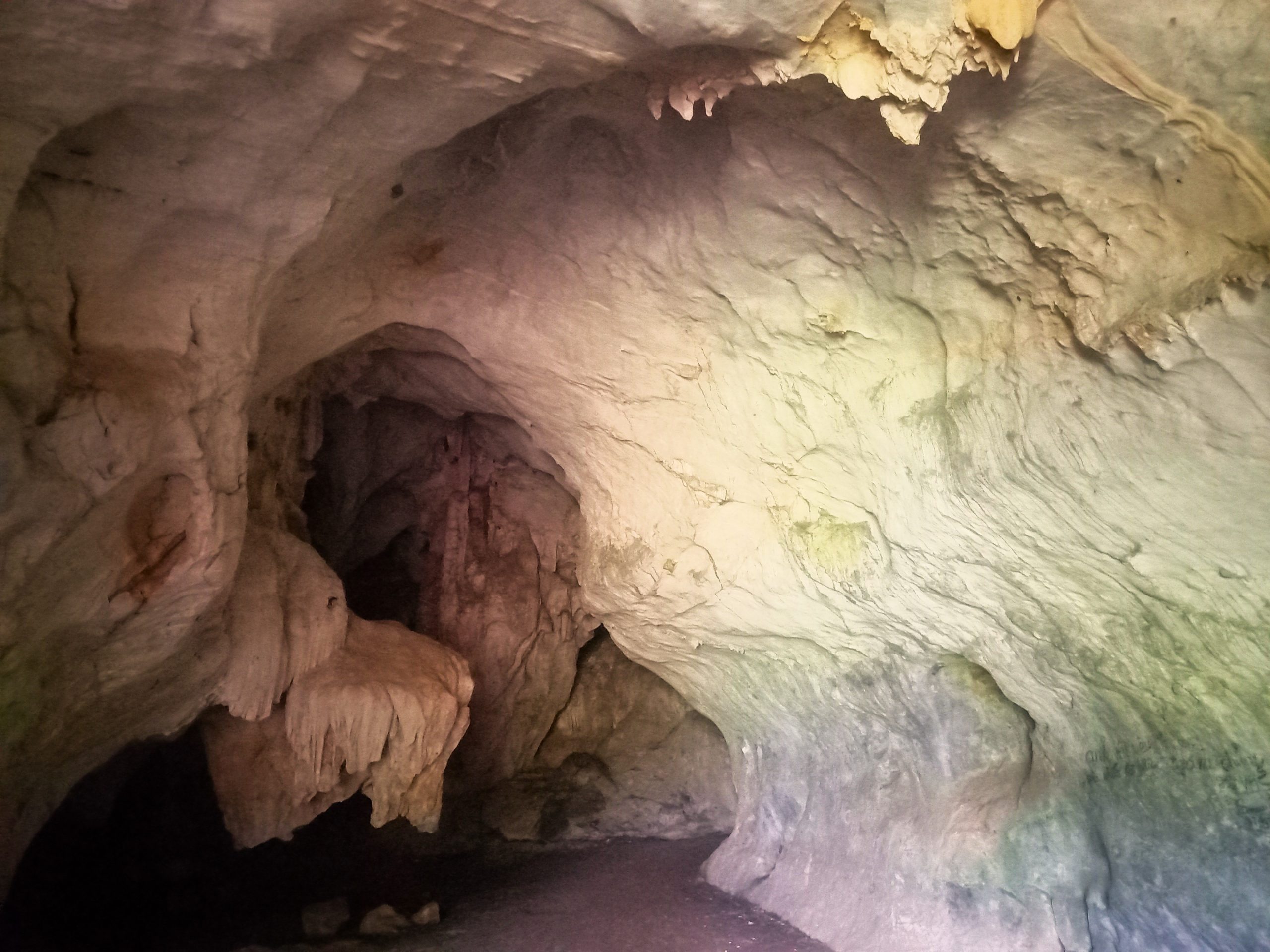
[Back Top]
MAP:
Hang Bua & Thẩm Ồm Caves | Nghệ An Province
THE CAVES:
A small chain of limestone mountains rises from the rice paddies along the banks of the Hiếu River, forming a plateau of jungle-covered karsts. These are the Phà Én Mountains, where time, water, weather and tectonic activity have slowly eroded the limestone, carving fissures, pillars and gaping holes into the landscape over millions of years. The largest naturally formed cavities in the Phà Én Mountains are Hang Bua and Thẩm Ồm.

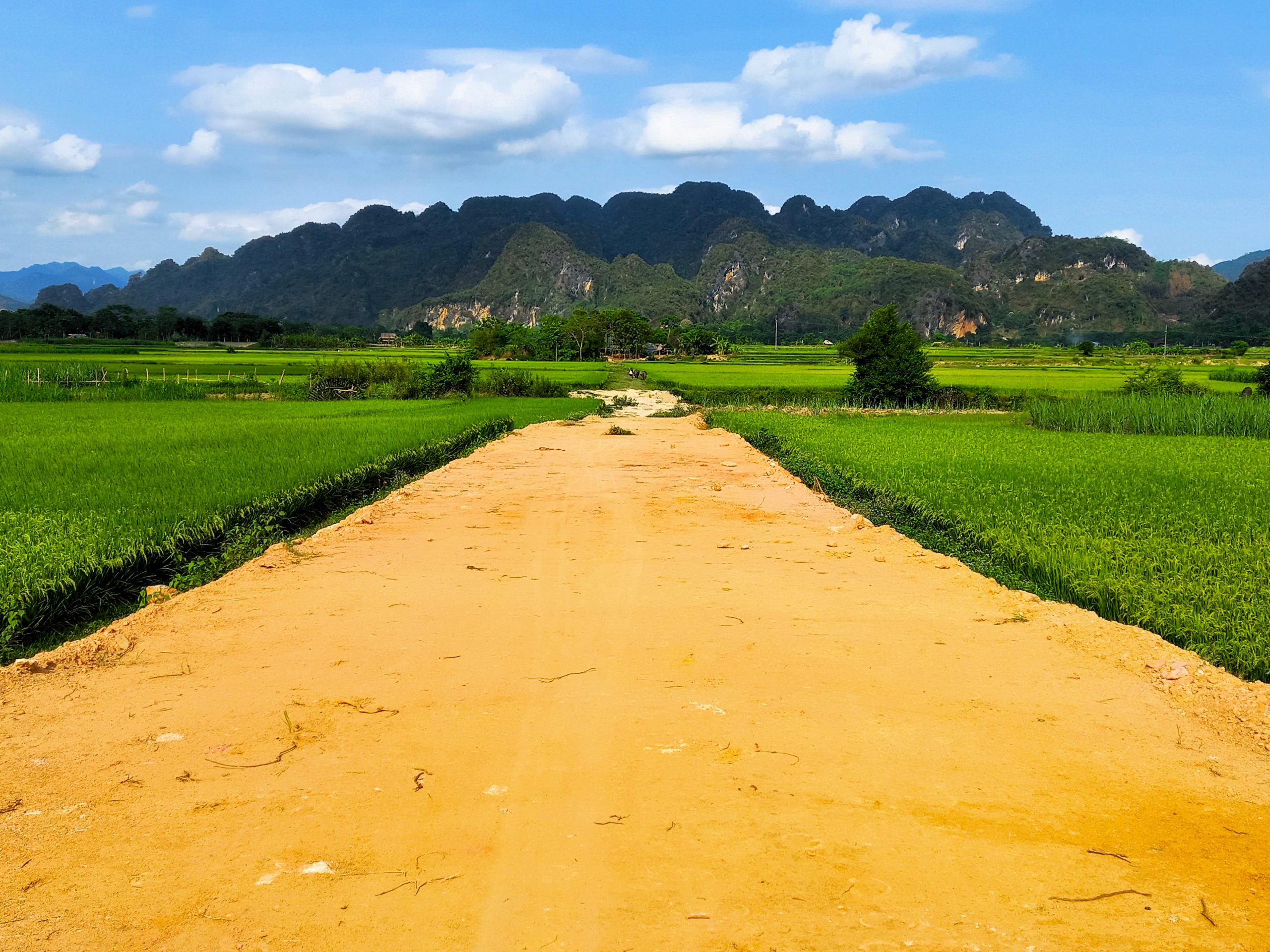
These two caves have provided refuge for humans and animals alike for hundreds of thousands of years. The caves are ‘natural homes’ with roofs, walls and entrances offering easy access and protection from the elements and predators. Today, the former still exists – searing summer heat, heavy monsoon rains, and chill winter winds – but the latter are all but gone: Indochinese tigers, Javan Rhinos, Asian black bears, and Asiatic elephants, many of whose fossilized bones were discovered in the caves, have been poached to near extinction in the wild in Vietnam. Fragments of human teeth from Thẩm Ồm Cave are the earliest evidence of homo sapiens in Vietnam and the Southeast Asian mainland ever found, dating back 200,000 years to the Middle Pleistocene period.
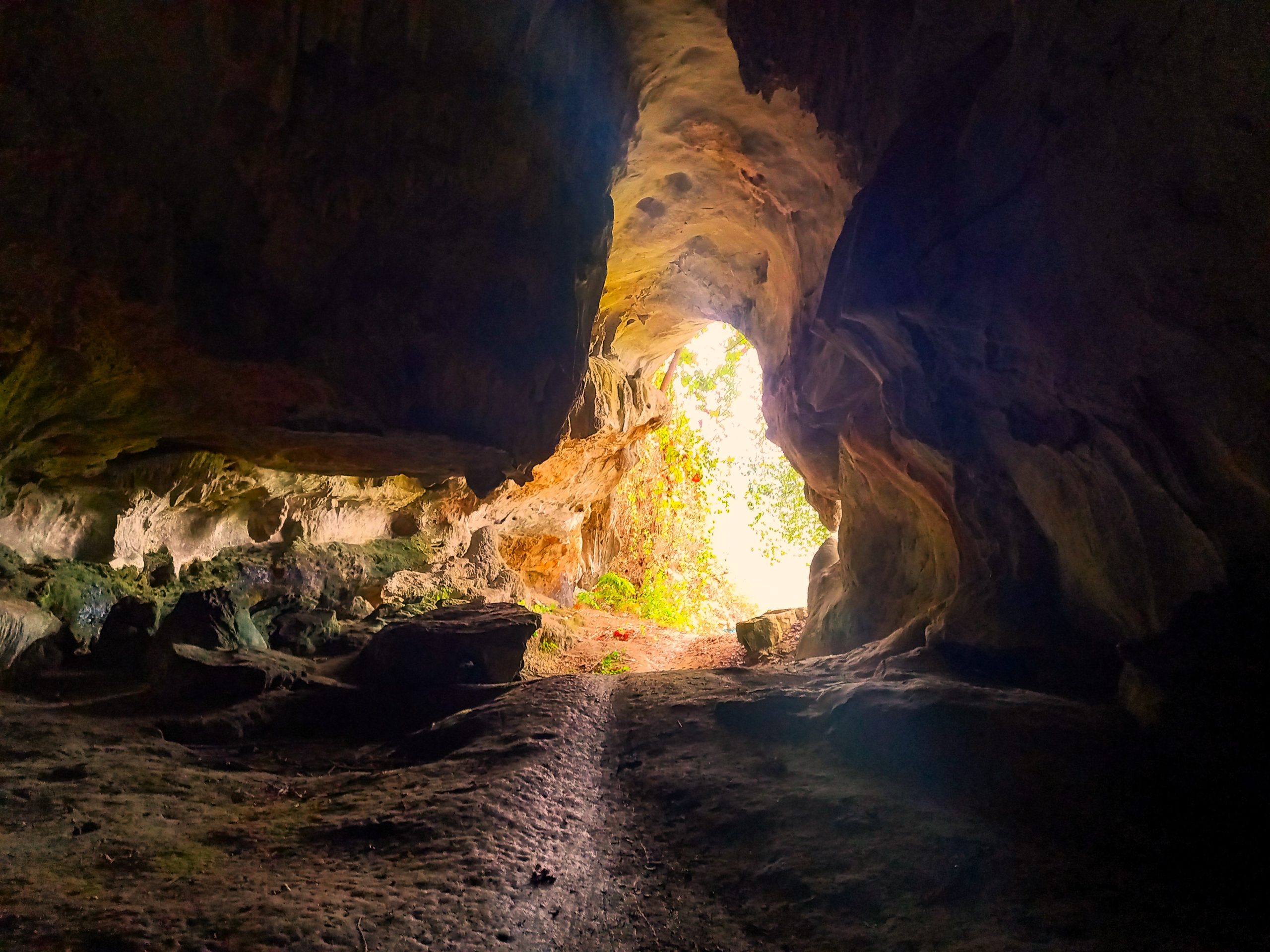
The caves are linked to ancient human rituals and ceremonies. The flat land in front of Hang Bua is a natural ‘events space’ where festivals, markets, and sacrifices to the mountain gods and spirits were performed. The local Thái people tell stories of myths and legends associated with the caves, and a festival is still held outside Hang Bua every year on the full moon in January. It’s strange that we don’t generally consider the human history of natural sites: when visiting mountains, rivers and landscapes, we tend to focus of their natural beauty and geology. But most natural sites have a human history too, especially caves. When you’re standing at the entrance to Hang Bua or Thẩm Ồm, you’re at a place that has witnessed human activity long before the Cham temples at Mỹ Sơn were built or the palaces and tombs in Huế or the Pyramids of Giza in Egypt or Stonehenge in the UK for that matter. At these caves you can feel and reflect upon both the natural and human history and beauty of the site.


Entrance to both caves is free and very few people visit, except for weekends, public holidays and festivals. Of the two, Hang Bua is more developed for visitors, with an entranceway, carpark, a couple of food and drink vendors, and an information board (in Vietnamese only). By contrast, Thẩm Ồm is accessed via a dirt path through a field and a brief scramble over rocks, with no visitor infrastructure apart from a signpost.
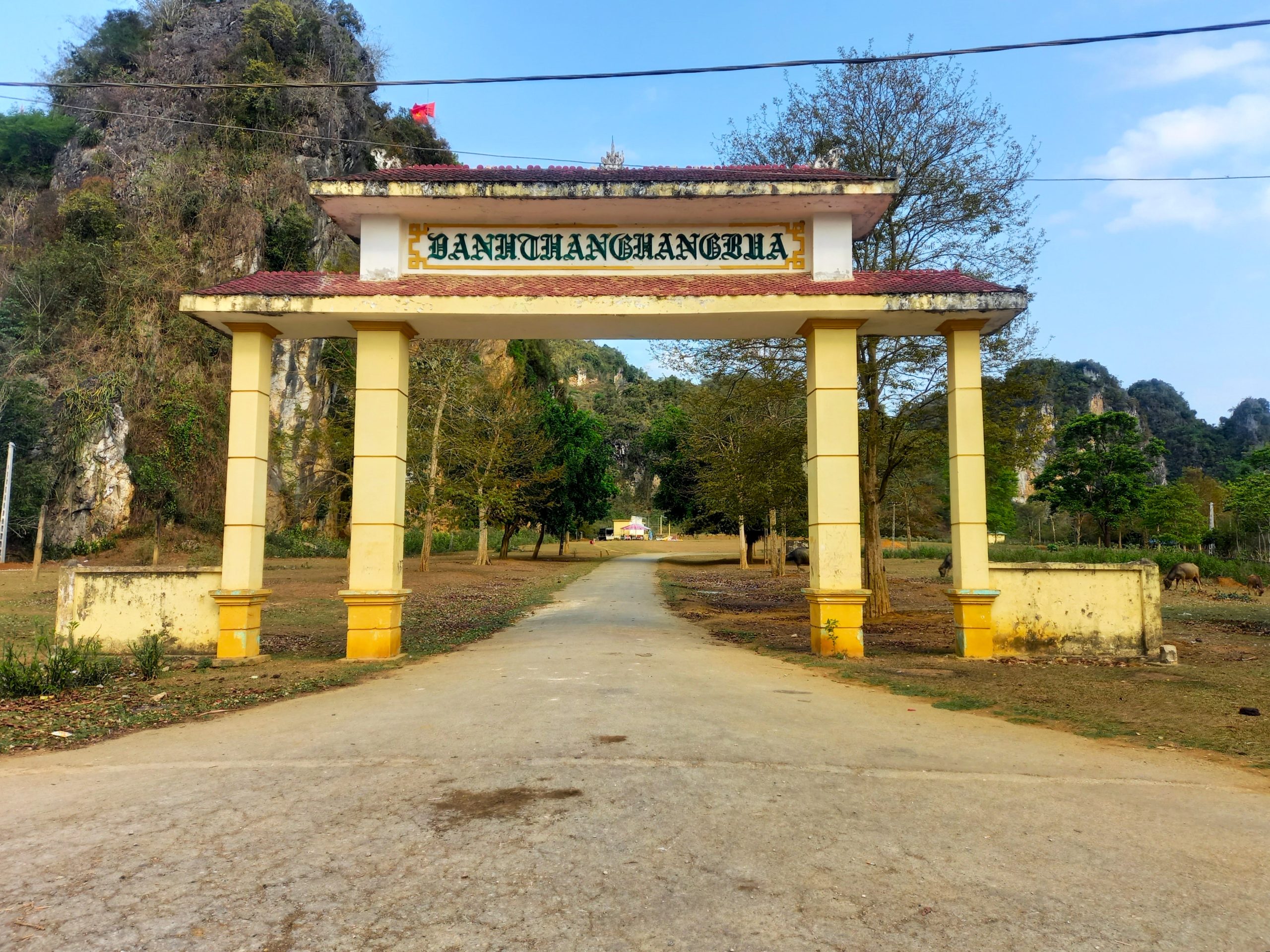
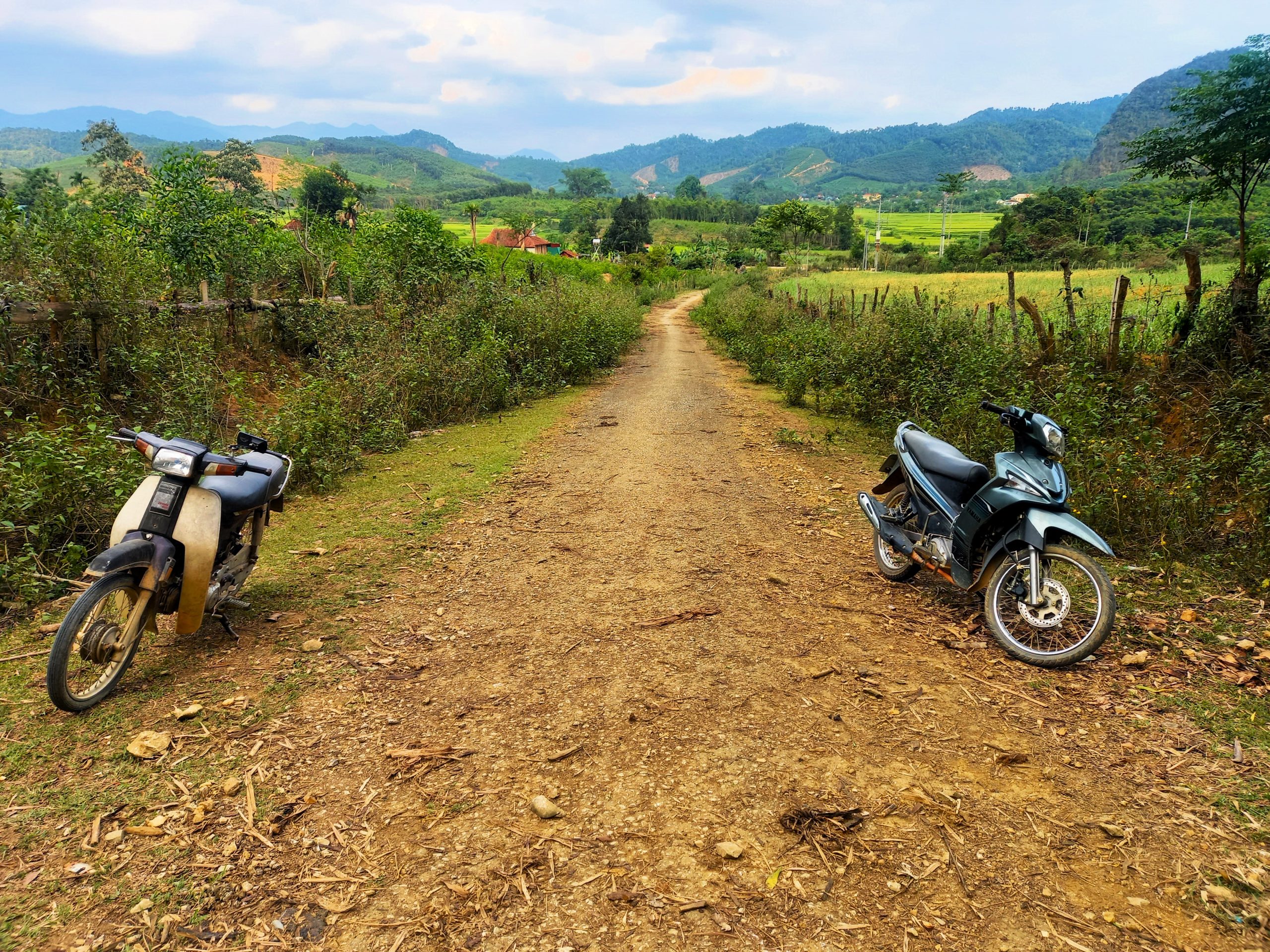

Inside, Hang Bua is atmospherically lit by shafts of sunlight coming through holes in the limestone and by artificial lighting which brings out the colour and pattern of the stone walls and the intricate sculpted forms of stalactites and stalagmites growing like giant coral from the roof and floor of the cave. At Thẩm Ồm, however, there’s no light at all: once you are deep enough insde the cave that the sunlight from the entrance is gone, it’s pitch black. You must bring a torch or have a flashlight app on your phone, otherwise the darkness is not only unnerving, but dangerous – there are hidden depressions, slippery surfaces and sharp rocks at head height.
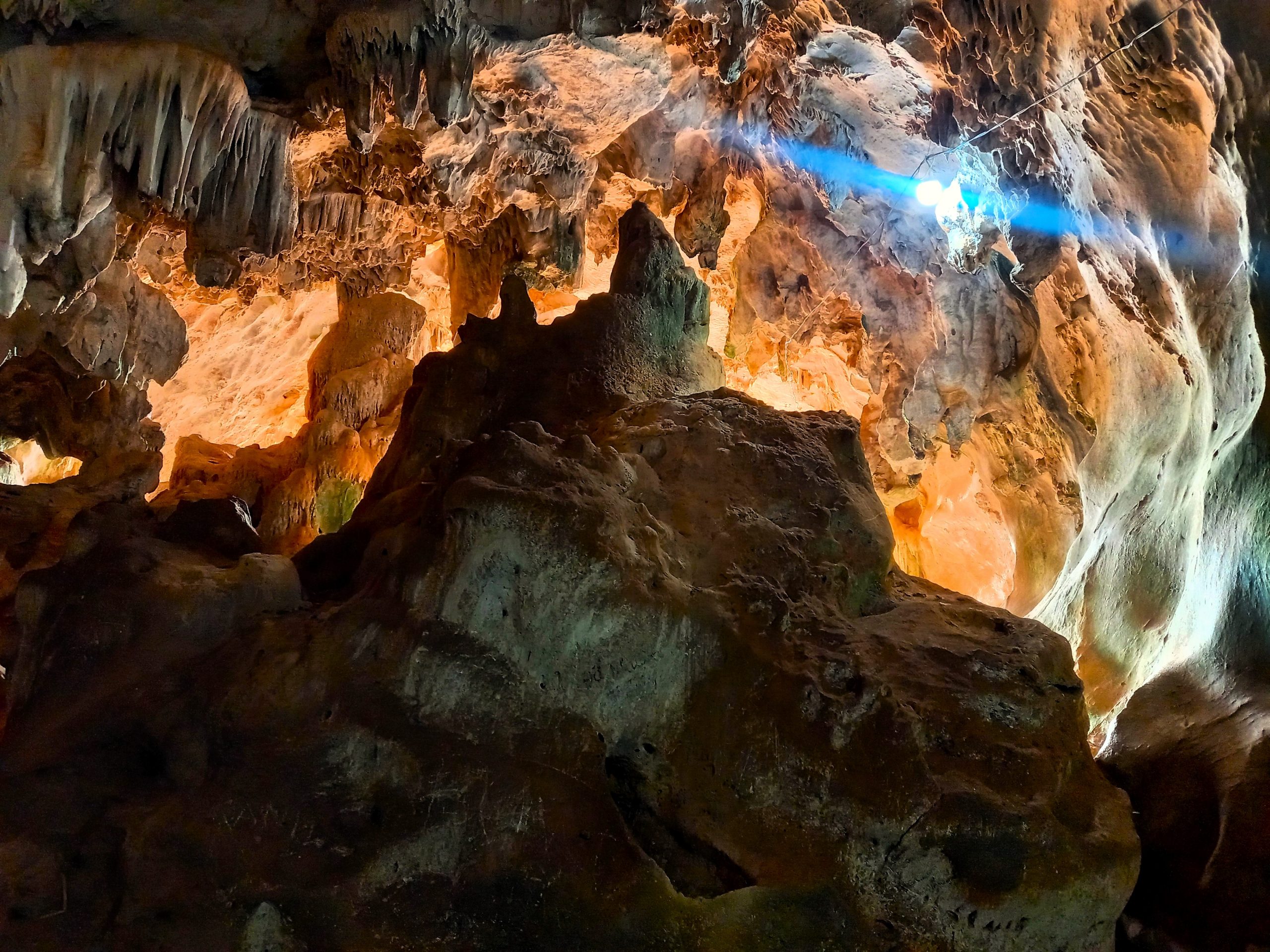

Although the entrance to Hang Bua is quite small, the cave opens into a large limestone hall with several antechambers and an impressive formation of stalactites at its centre, like an altar. The air is cool inside the cavern and it’s pleasant to wander around for 10 minutes admiring the natural architecture. Thẩm Ồm is a different experience. Because there’s no light, it’s difficult to make out the natural formations inside the cave. But the lack of artificial lighting and visitor infrastructure gives it more of a ‘wild’ and thrilling feel. It’s easy to imagine humans and animals taking shelter in Thẩm Ồm. Indeed, the cave is still used by locals today as a place of storage for agricultural goods, shelter from the sun and rain for farmers, and a transportation tunnel between the strange circular oasis of farmland and forest that the cave leads to. Apparently, Thẩm Ồm is an extensive cave system and there are plans to open more of it to visitors in the near future.

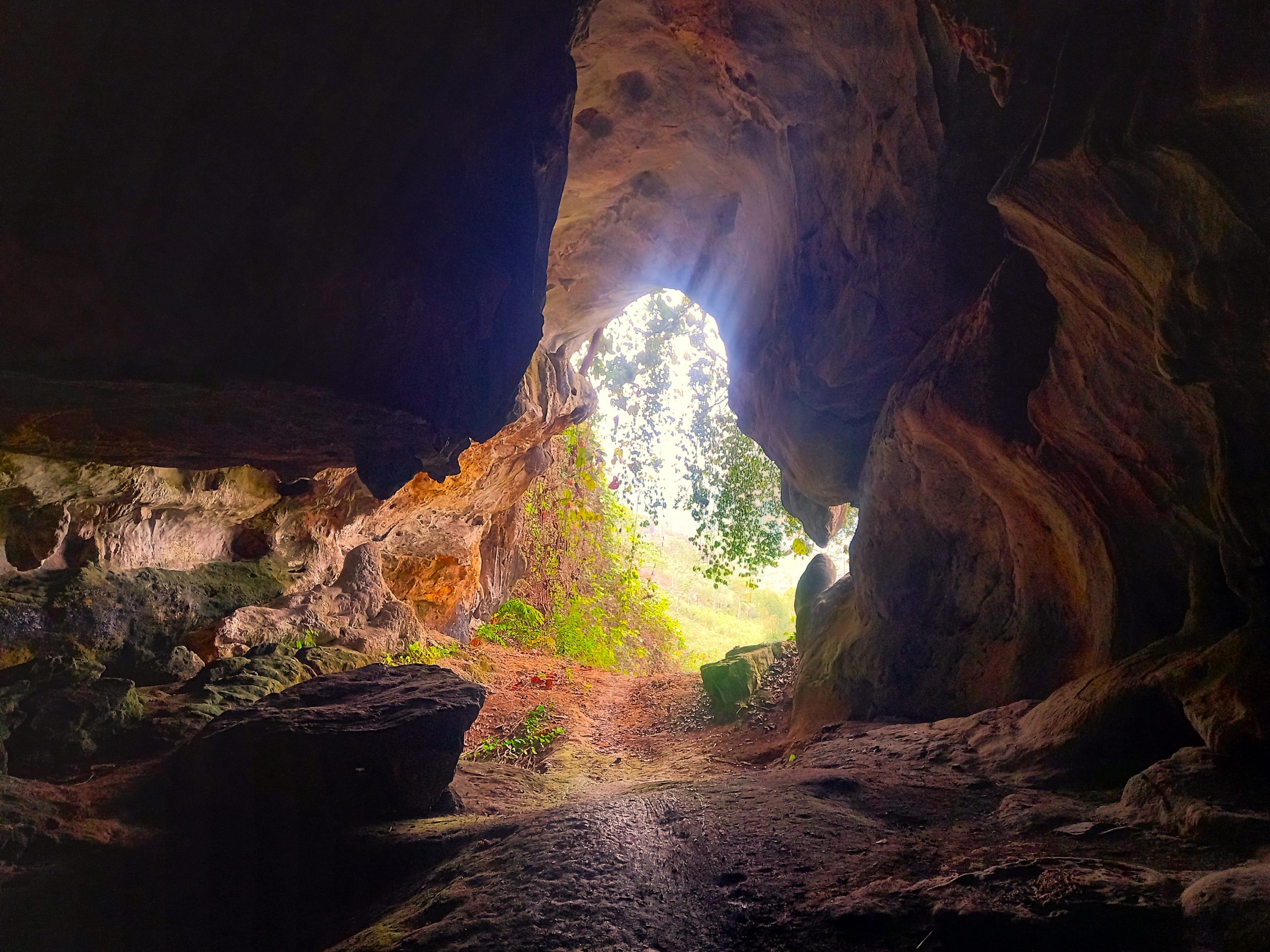

WHERE TO STAY:
Just 4km due west of Hang Bua Cave, Hoa Tiến is a small ethnic Thái village where several of the wooden stilt houses operate as homestays. The village is close to an attractive river surrounded by glimmering rice paddies which are irrigated by bamboo waterwheels dotted along the riverbanks. It’s very pretty and most of the homestays can arrange short boat trips on the river and walks into the fields. The homestays are around 200,000vnd per night for a mattress on the floor beneath a mosquito net. The price usually includes breakfast, but dinner is extra and well worth it. A night at one of the homestays in Hoa Tiến is atmospheric and perfect as a base from which to explore both Hang Bua and Thẩm Ồm caves, as well as the surrounding countryside. However, if you don’t fancy the relatively rustic homestay accommodation, the town of Qùy Châu (also called Tân Lạc) is only 15km due east of Hang Bua, where there are a few mini-hotels and guesthouses, including Khách Sạn Hải Thuyên which is clean and comfortable (300,000vnd).
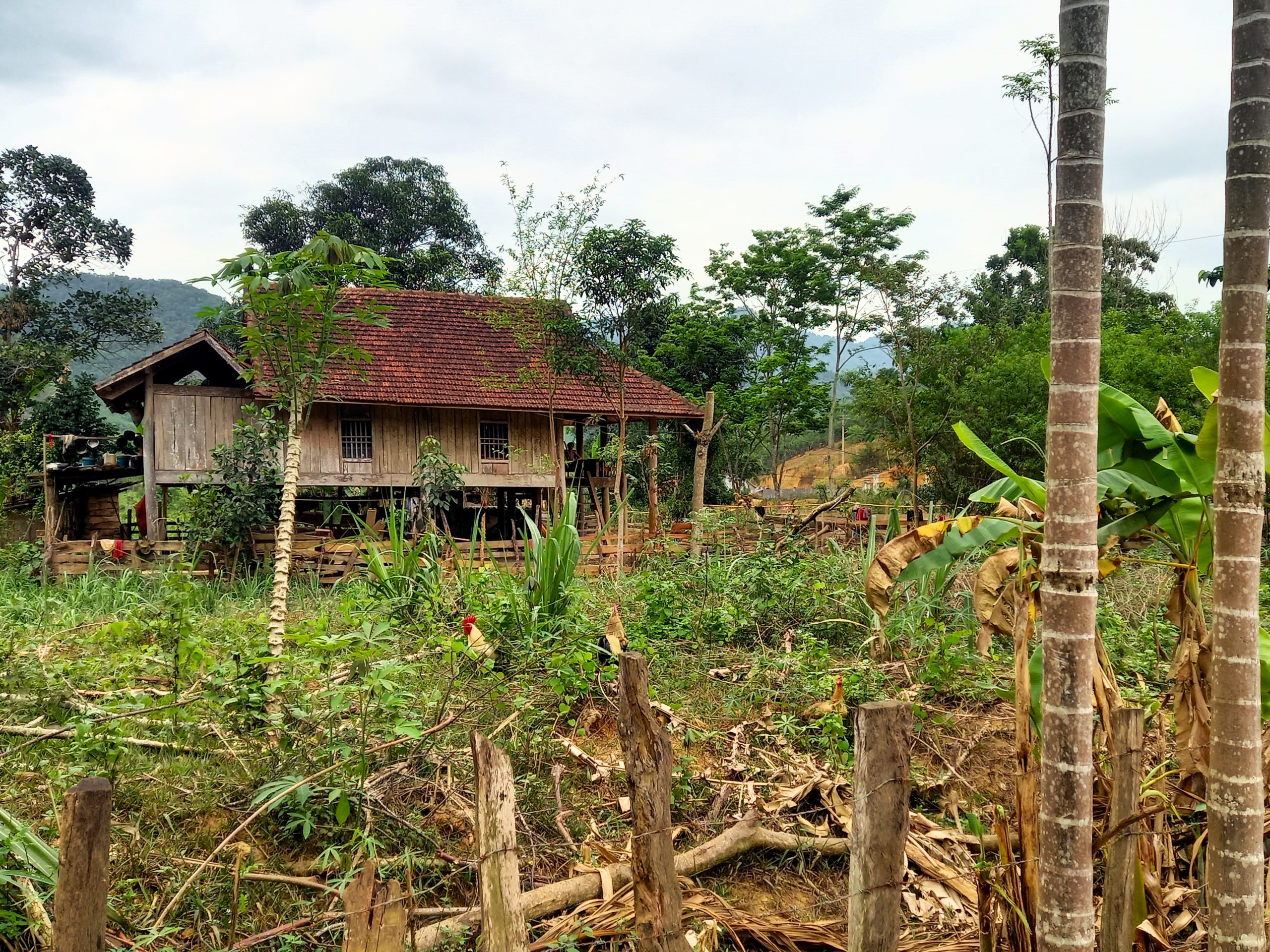

FOOD & DRINK:
In the small villages and hamlets around Hang Bua and Thẩm Ồm caves you can find some drink kiosks, snack stores and local restaurants. But for proper meals it’s best to look around the Hoa Tiến homestay cluster or along the main road (QL48A) near Châu Tiến village. Even better, head 15km due east to Qùy Châu town (also called Tân Lạc) where there’s a decent selection of street food and local rice and noodle eateries (quán cơm phở) to choose from. In general, local food is very good in this region.
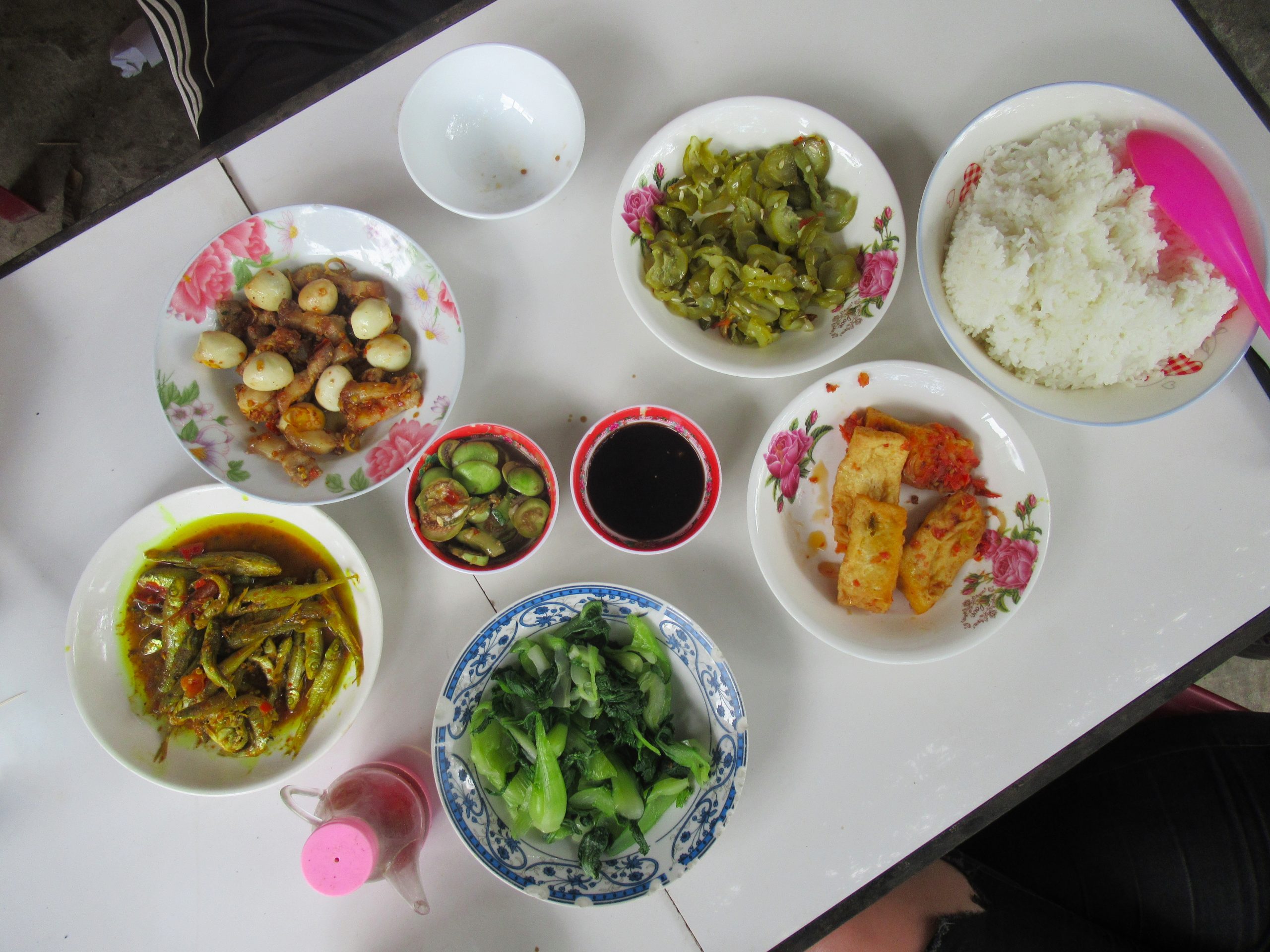
HOW TO GET THERE:
By road, Hang Bua Cave is 160km from Vinh, the provincial capital and transportation hub for the region; 75km via QL48A from Thái Hòa, the nearest town on the Ho Chi Minh Road (QL15); and 315km from Hanoi. The nearest airport, major railway station and interprovincial bus station are in Vinh. The best way to visit Hang Bua and Thẩm Ồm caves is on the Mường Lống Loop or as a detour from the Ho Chi Minh Road. Road conditions are good and traffic is light. Both caves are accessed via scenic, paved backroads branching northeast off QL48A at Châu Tiến. Hang Bua Cave is just 2km from the main road; Thẩm Ồm Cave is a further 9km via the villages of Châu Bính and Châu Thuận. Both caves are signposted from the road.
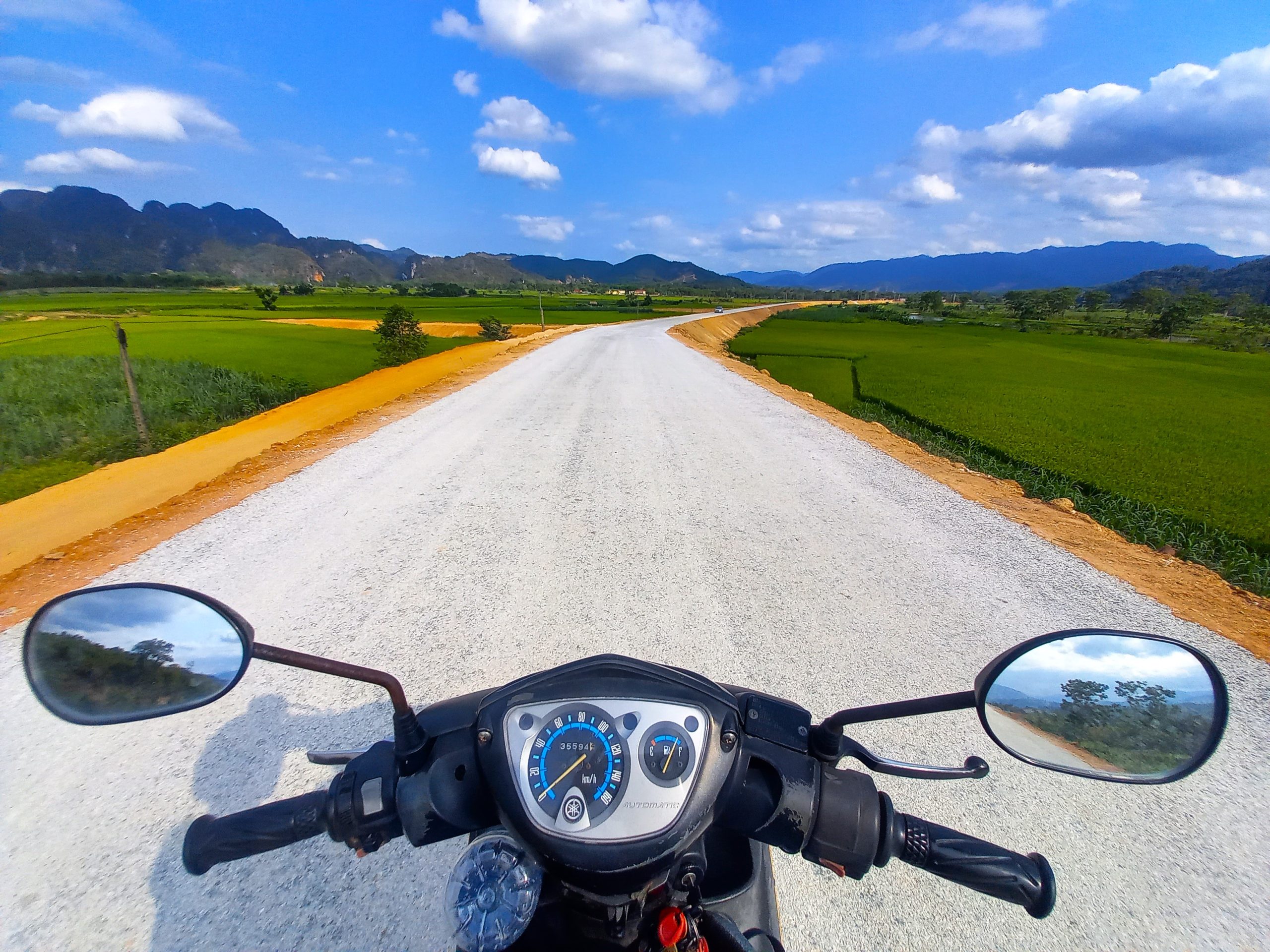

*Disclosure: I never receive payment for anything I write: my content is always free and independent. I’ve written this guide because I want to: I like these caves and I want my readers to know about them. For more details, see my Disclosure & Disclaimer statements and my About Page

